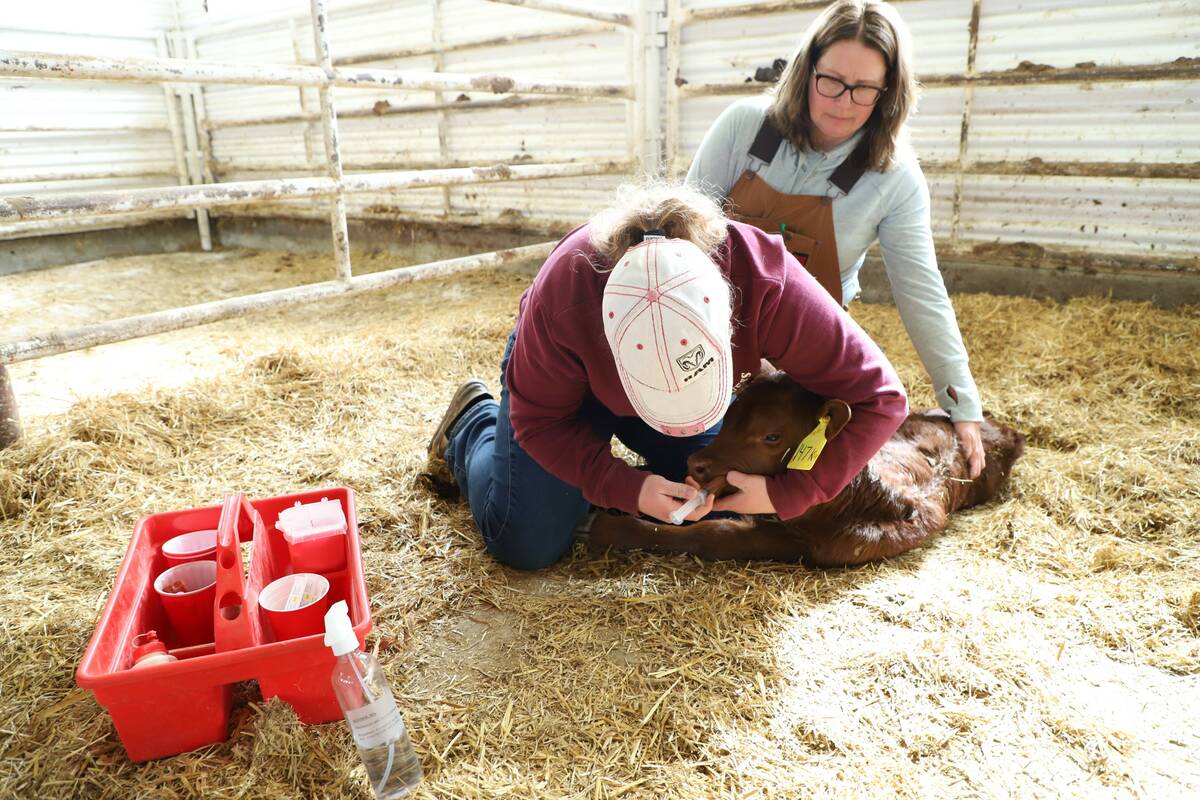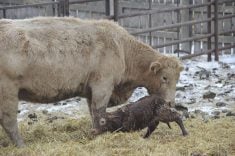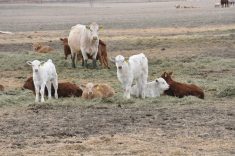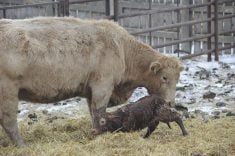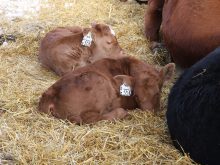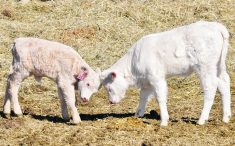Free-choice vitamin and mineral intake over winter may not be enough to ensure that newborn calves are receiving sufficient nutrition through their dam’s colostrum.
Research conducted at Lakeland College in Vermilion, Alta., suggests that cows receiving supplementation on a free-choice basis are often deficient in key vitamins and minerals, meaning their calves will also be deficient at a time when developing their immune response is vital.
“With more and more extensive grazing systems, swath grazing and bale grazing … and offering minerals and vitamins to the cows free choice, it’s really hard to get a consistent intake,” said Brenda Ralston, a RDAR research scientist in livestock health at Lakeland College.
Read Also

Pork sector targets sustainability
Manitoba Pork has a new guiding document, entitled Building a Sustainable Future, outlining its sustainability goals for the years to come.
While many producers are on the lookout for visual clinical issues in their calves, such as white muscle disease, Ralston warned that “it’s the subclinical symptoms of nutrition deficiency in those calves that’s probably the thing that costs you more money simply because you’re not treating it because you don’t see it.
“So the thought was … are there calves out there that are deficient? And if they are, how can we bridge that gap?”

This prompted Ralston and her team to study the effectiveness of Vitaferst, an oral supplement for calves one to three days of age, in improving vitamin and mineral deficiencies and overall health and immunity.
Supported by a grant from the Natural Sciences and Engineering Research Council of Canada (NSERC), the researchers collected data on cow-calf pairs from the college’s herds, as well as from six herds in the Vermilion area, over the course of two years. All the herds included in the study used free-choice vitamin and mineral supplementation.
Blood samples were taken from the cows and their calves about a day after calving. From there, half of the calves in the study received a dose of Vitaferst.
In the study’s first year, the researchers took a second blood sample from the calves 14 days later to see how their vitamin and mineral levels changed. In the second year, they shortened the time between blood samples, returning to collect samples from the calves three days after calving.
Ralston did note that a liver biopsy is a better measurement of an animal’s vitamin and mineral levels than a blood sample, but that was not an option with small calves.
Systems approach
Ralston explained that data on about 120 head showed the calves were “below the recommended levels (for vitamins and minerals) across most of the herds.”
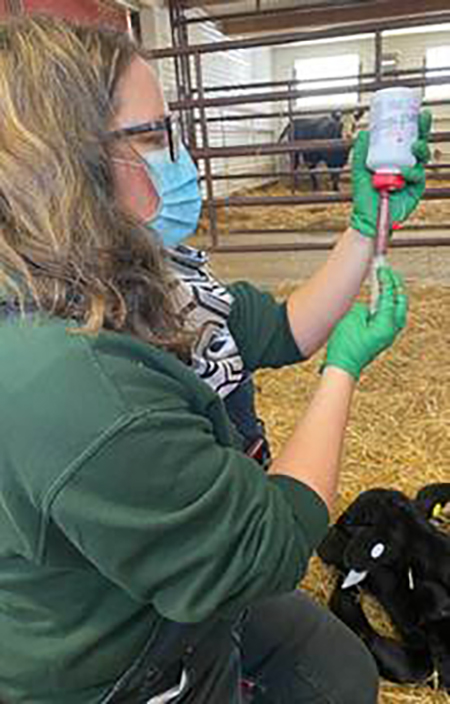
Sixty-four per cent of the calves were deficient in vitamin A, while 88 per cent were low in selenium and 92 per cent were low in copper.
“There was no real difference from what we saw between the Lakeland-managed herds and the producers … and of course, these are really well-managed herds,” she said.
“What it told us was that yes, there is some challenges out there with supplying the proper minerals and vitamins to cows, certainly during the winter period, especially under systems that rely on free-choice intake.”
While some of the calves supplemented with Vitaferst experienced a rise in vitamin and mineral levels, it wasn’t always up to the point considered sufficient.
“Not every mineral and vitamin level rose to be considered adequate with just one dose of Vitaferst, highlighting the need for a systems approach to supplementing minerals and vitamins to your herd,” said Ralston.
This means ensuring beef females have sufficient levels before calving, supplementing them however you can in consultation with your veterinarian and nutritionist. Feeding a total mixed ration (TMR) is a good option to ensure consistent supplementation intake across the herd.
As well, individual dosages of oral or injectable products can also be given to cows ahead of calving in consultation with your animal health team, and, if need be, to new calves as a follow up.
In addition to Vitaferst, other products such as Multimin 90 and Bovi-MV are available for vitamin and mineral supplementation.
“Individual dosing of cattle with minerals and vitamins is never going to replace free choice because nobody in their right mind wants to run their herd through every month to dose them,” she said.
“But those products are available to top up mineral and vitamin levels as required.
Contact pwhelan@farmmedia.com


